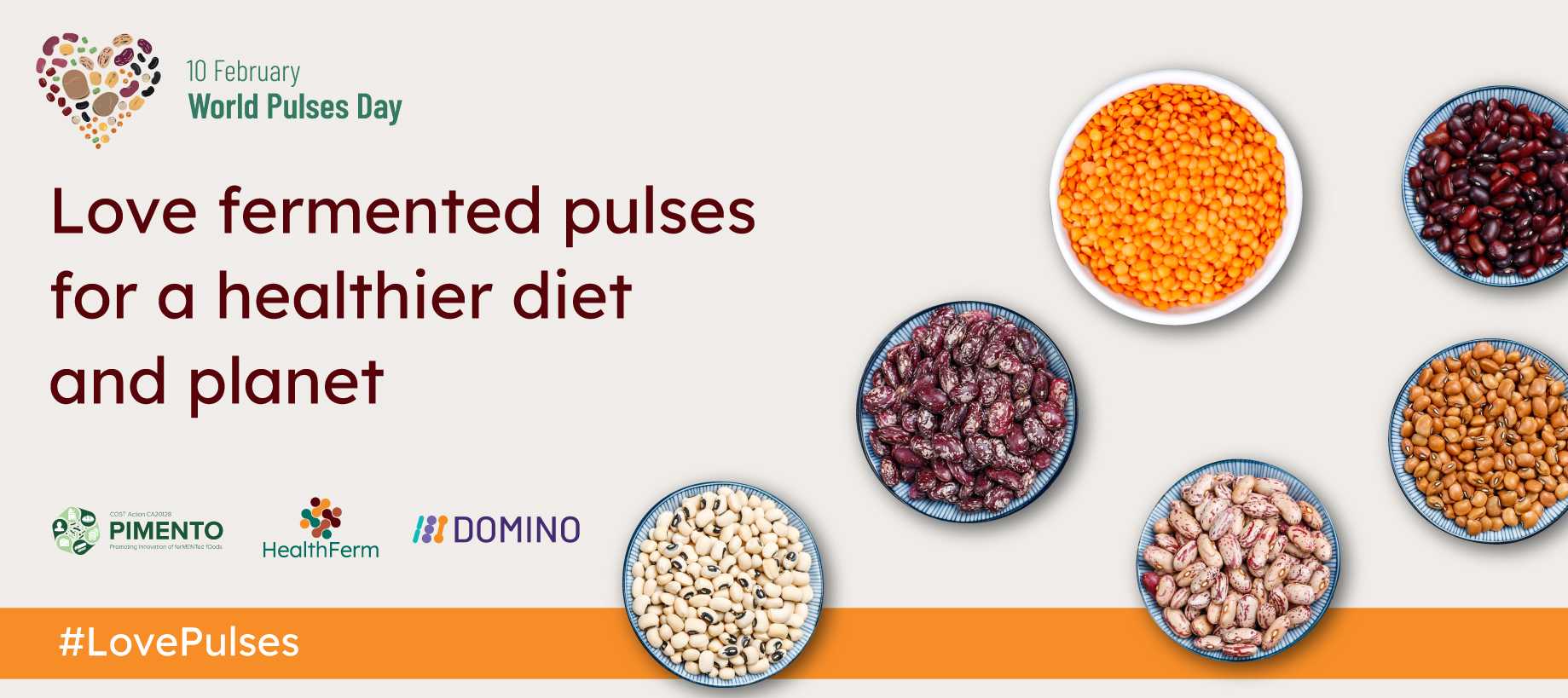Celebrating World Pulses Day: A Spotlight on Fermented Pulses

Since 2018, on February 10th the United Nations (UN) celebrates World Pulses Day, a global event designed to raise public awareness about the environmental significance and nutritional benefits of pulses.
These edible seeds from a legume plant (including lentils, chickpeas, beans, lupin and other protein grains) have great benefits for food security, nutrition, health, climate change and biodiversity. According to the UN, the cultivation of pulses is an effective strategy for achieving its 2030 Agenda for Sustainable Development, as they can contribute to the development of sustainable food systems and towards eradicating world hunger and poverty.
Fermented pulses: What are they, and why are they important?
Applying the art of fermentation to pulses not only elevates the culinary experience but also contributes further to pave the way for healthier and more sustainable food systems. Fermentation, which consists of the intentional and safe application of specific microorganisms to raw materials, is a promising strategy for producing value-added, nutritious, and palatable pulse-based foods.
Gastronomically speaking, fermentation of pulses can enhance their texture, appearance, colour, taste and flavour. Regarding human health benefits, pulses fermentation can enhance protein digestibility, vitamin content, bioavailability of minerals, and reduce non-nutritive compounds like flatulence causing oligosaccharides and other related anti-nutritional compounds (e.g. phytic acid). In addition, fermented pulses may provide beneficial microorganisms that promote gut health.
What are the environmental benefits of fermented pulses?
In addition to the associated health benefits, pulses production and consumption also have a positive impact on the environment. The cultivation of pulses enhances the growth of soil organisms that improve both land structure and nutrient availability. By boosting soil biodiversity, pulses help ecosystems to be more resistant and resilient to disturbance and stress, such as drought and a changing environment. Pulses thus show a high potential in sustainable food systems.
Fermented pulses bring further advantages to these environmental benefits, having a broader impact on food system value chains. The production process for fermented foods is often environmentally friendly, requiring low inputs of water and energy and limiting waste production. The final product extends the shelf-life of food, reducing cold chain requirements, hence helping to reduce food waste and energy-intensive logistics. Finally, fermented pulses answer the need for more nutritious plant-based protein alternatives, in response to the growing need to reduce our reliance on animal-based proteins to reach environmental and climate targets.
Fermented pulses in the kitchen: Tastes from around the globe
From traditional dishes to contemporary recipes, various cultures across the globe embrace fermented pulses. Equipped with the understanding of their benefits for people and the environment, fermented pulses can be part of a well-balanced planetary diet. Curious about how to implement them in your own meals? Check out a few examples of fermented pulses-based dishes below!
- Bean tempeh: With its origins as a traditional Indonesian food, tempeh is a popular choice for those following plant-based diets. Tempeh is often made from fermented soybeans, but it can also be created from other pulses – check out this recipe for lentil, chickpea and bean tempeh.

- Handvo: Coming from Gujarat, India, Handvo is a savoury vegetable cake made from a fermented rice and lentil batter (lentil being the fermented pulse!). Filled with fresh vegetables, chilis and spices, this dish is as versatile as it is delicious – see this recipe to make it yourself.
- Natto: A popular, traditional food in Japan made from fermented whole soybeans, natto is commonly consumed during breakfast time. Check out this recipe to make your first meal of the day tasty and fermentation-inspired!

Research in fermented foods
To take full advantage of the pivotal role that fermented pulses can offer for enhanced environmental and human health, more research is needed to improve scientific understanding of fermented foods and the innovations needed to reach consumers. Hence, this is the objective of three EU-funded projects: HealthFerm, PIMENTO Cost Action, and DOMINO. These dynamic and intersectional projects seek to achieve these goals by advancing knowledge and increasing consumption of fermented foods in Europe as a lever for better sustainability and health. To learn more about each project, read below:
The HealthFerm project is a European research project investigating innovative pulse and cereal-based food fermentations together with the health effects and consumer perception of novel fermented foods. Faba bean and yellow pea will be used in different products like sourdough bread, dairy- and meat alternatives.
PIMENTO is a COST Action focused on promoting innovation on fermented foods bringing scientists and researchers together with food industry stakeholders. The long-term goal of PIMENTO is to place Europe at the spearhead of fermented food innovation, promoting health, regional diversity, local production at different scales, contributing to economical and societal development as well as food sovereignty.
The DOMINO project intends to explore how fermented food consumption shapes the gut microbiome and provides health benefits to consumers. This project will contribute to a better understanding of how dietary recommendations based on fermented foods can support individuals with metabolic syndrome.
The collaborative efforts of these research projects underline the commitment to unlocking the vast potential of fermented foods, including pulses, for shaping the future of global nutritional security and sustainability.
This article was co-written by Domino, HealthFerm and PIMENTO researchers and published in all of the project websites.